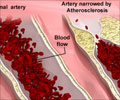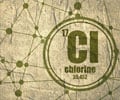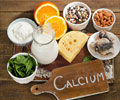- Mechanisms behind the accumulation of calcium in the blood vessels have been identified.
- Vascular calcification is the accumulation of calcium in the vascular system - veins, arteries, and lymphatic system.
- It is a common complication in chronic kidney disease (CKD) and cause of death in many other diseases.
A different mineralization for bones and teeth, and blood vessels
Their study showed that collagen, which is essential for the normal mineralization of our bones and teeth, is not responsible for arterial mineralization.
"The first part that mineralizes in the arteries of our genetic model is the elastin part and not collagen," said Cerruti, noting that this is very different from what happens in bone and teeth.
"To me that was really surprising. The part that mineralizes in bone and teeth is collagen. Since collagen is also present in the arteries, you would think collagen must have really specific properties that aid that process, so why do the minerals instead get deposited in association with elastin in arteries?"
Using the CLS's SXRMB beamline, Cerruti's team has discovered the presence of early-stage calcium phosphate minerals in the elastin-containing layers of the diseased mouse arteries.
In this instance, however, Cerruti is hopeful the findings of this research will lead to a therapy that will block mineral accumulation in the arteries of patients who are prone to this condition.
The conclusion of the study states that an effective strategy to prevent vascular calcification may involve intervening at the stage where calcium phosphate minerals begin crystallizing. It may be possible to selectively dissolve these nascent crystals with appropriately targeted drugs, the paper concludes. Cerruti and Murshed are leading an interdisciplinary group to examine whether customized biomolecules can be used to effectively block the process of mineral nucleation and/or crystal formation in the arteries at a very early stage.
As the research article explains, no current treatment for mineralization in arteries exists, largely because of lack of understanding of the underlying molecular mechanism. Cerruti expects her team will be back at the CLS as they work to refine their understanding of this stage of the mineralization process.
Cerruti expresses caution at this point and says her team's paper only "hints" at a pathway forward to improving human health using a drug to treat a condition for which an effective treatment is still elusive.
"Maybe if we can stop the nucleation, we might be able to stop arterial mineralization," she said. "An interdisciplinary approach will be needed to solve this age-old problem."
References:
- Ophélie Gourgas, Juliana Marulanda et al. Multidisciplinary Approach to Understand Medial Arterial Calcification, Arteriosclerosis, Thrombosis, and Vascular Biology https://doi.org/10.1161/ATVBAHA.117.309808
Source-Eurekalert















